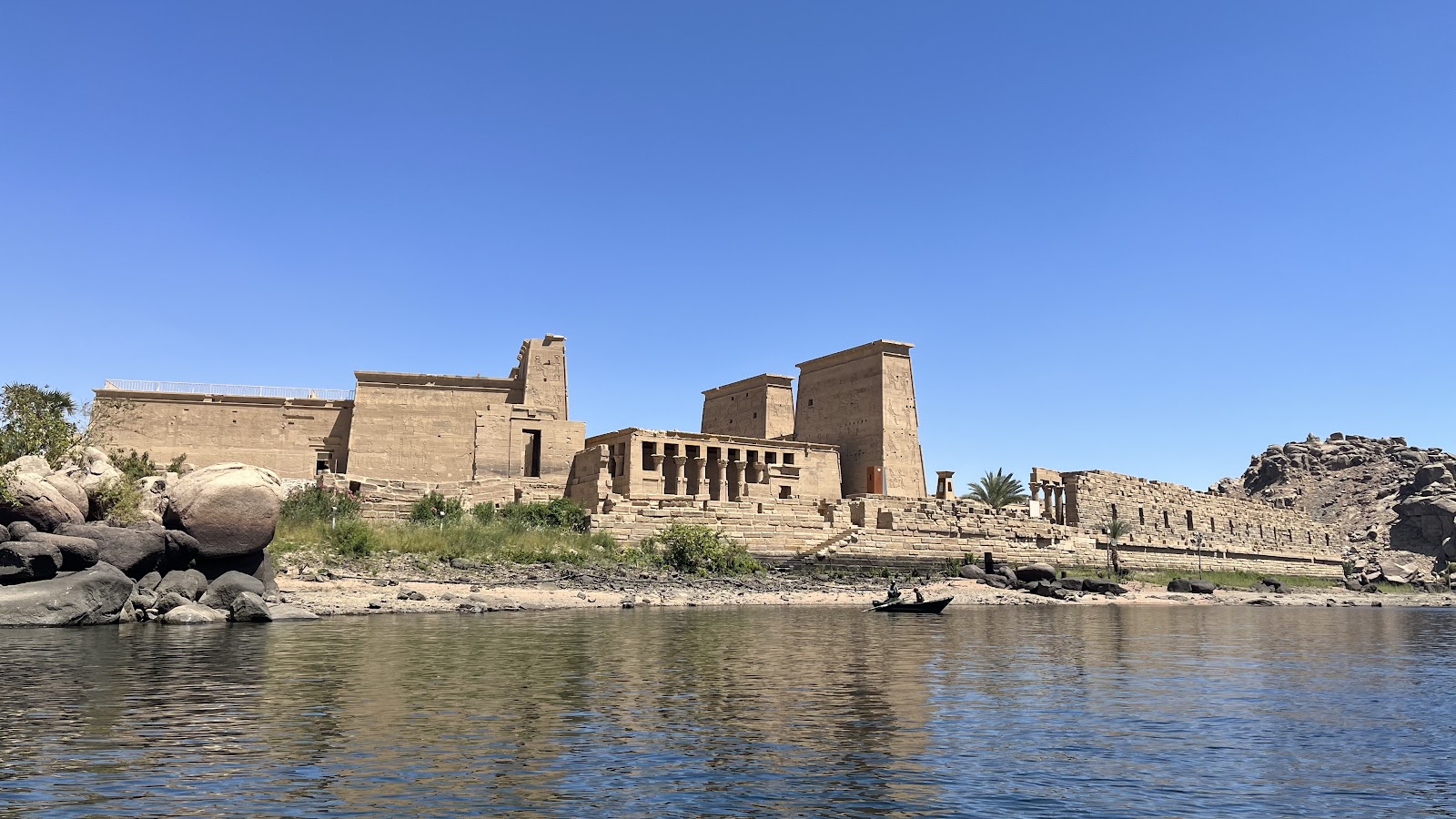Temple of Philae – A Timeless Treasure of Ancient Egypt
H2: Where Is Philae Located?
H3: The Island Between Two Dams
Philae is an island in the Nile, located between the Aswan High Dam and the Aswan Dam in the Aswan Governorate. It lies in the First Cataract, about 7 kilometers south of the modern city of Aswan, providing a safe place for temple construction away from flooding.
H3: A Strategic Spot Safe from Nile Flooding
The location made it ideal for religious and architectural projects, ensuring the preservation of structures through centuries. The island contains many monuments, the most important of which is the Temple of Isis. The name “Philae” is Greek and means “treasure” or “favorites.”
H2: Historical Background of Philae
H3: The Meaning Behind the Name “Philae”
The term “Philae” comes from the Greek language and was a tribute to the island’s spiritual and cultural significance in ancient times.
H3: Earliest Remains from the 25th Dynasty
The oldest ruins on the island date back to the reign of King Taharqa of the 25th Dynasty, indicating Philae’s importance even in early Nubian-Egyptian relations.
H2: The Architectural Wonders of Philae
H3: Temple of Nectanebo I – A Courtyard of Columns
There is also the Temple of Nectanebo I, located in the southeastern corner of the island. It consists of an open courtyard on the east and west sides, with a colonnade of two rows of columns. The west side has 31 columns with composite capitals, while the east side has 17 incomplete columns and seven doors leading to the rear courtyard.
H3: Intricate Decorations and Nile Views
The walls behind the columns are decorated with scenes of offerings and religious rituals, and contain windows with stunning direct views of the Nile.
H2: The Temple of Isis – Heart of the Island
H3: A Sacred Temple Turned Church
The main temple of the island is the Temple of Isis, which was later converted into a church during the Christian era. It remained a prominent pilgrimage site for centuries.
H3: Iconic Pylon and Statues of Isis and Horus
The first pylon serves as the temple’s grand entrance and features two towers with a gate in between. On the western tower is an inscription of King Ptolemy II defeating enemies, while the eastern tower displays Isis and Horus in divine poses. Originally, two lions carved from pink granite and large statues stood here, but they were removed to England after excavation.
H2: Other Significant Monuments on Philae
H3: Temple of Hathor and Hadrian’s Gate
Apart from the Temple of Isis, the island features other significant monuments, such as the Temple of Hathor and Hadrian’s Gate, each reflecting Roman-era influences on Egyptian religious architecture.
H3: Kiosk of Trajan – The Pharaoh’s First Bed
Right next to the Nile stands the famous Kiosk of Trajan, also known as the Pharaoh’s first bed. Built around 100 AD by Emperor Trajan, this kiosk features 14 columns with composite floral capitals and reliefs of sacrifices to Isis and Horus. It likely once had a wooden roof.
H2: Philae’s Relocation to Agilkia Island
H3: The UNESCO Campaign to Save Nubian Temples
In 1968, due to rising waters from the Aswan High Dam, the Egyptian government, supported by UNESCO, initiated a global effort to rescue the temples of Philae.
H3: How Philae Was Moved and Preserved
The temples were carefully dismantled, relocated to nearby Agilkia Island (about 500 meters away), and reconstructed. They reopened to the public in 1980 and have been preserved since then as part of a global heritage conservation effort.
H2: Exploring the Inner Temple
H3: The Birth House (Mammisi) and Its Colonnade
The forecourt of the Temple of Isis contains the Mammisi, or birth house, with rooms encircled by Hathor-headed columns. This space was dedicated to Horus and Isis, celebrating divine birth and royal lineage.
H3: Staircases, Chambers, and the Sanctuary
A staircase leads deeper into the temple, reaching the sanctuary where intricate carvings remain in excellent condition, showcasing ancient Egyptian craftsmanship and religious devotion.
H2: Visiting the Temple of Philae Today
H3: What Makes It a Must-See in 2025
Today, the Temple of Philae is one of Egypt’s top cultural attractions. Its blend of ancient Egyptian, Greco-Roman, and early Christian influences makes it a must-visit destination for any traveler to Aswan.
H3: How to Access the Temple from Aswan
To reach Philae, visitors typically take a short boat ride from the Marina Philae Temple in Aswan. Guided tours and light-and-sound shows are also available for a more immersive experience.
Popular Hurghada Visites

